November 25, 2019
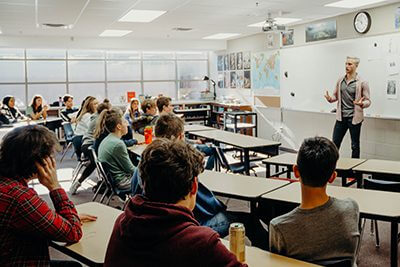 As a recent graduate of the University of Utah’s Entertainment Arts and Engineering program, MPA Class of 2015 alum Logan Erickson has a lot on the horizon. From designing games with Octothorpe, to leading the design and development of neurological rehabilitation assessments and training at Stronger Brains Inc., he is making an impact and inspiring others to do the same. One of Logan’s recent projects was developing a game in which the user enters the world of Sherlock Holmes as a Baker Street Irregular–coincidentally, MPA’s 2019 Middle School Play, Sherlock Holmes: The Baker Street Irregulars, allowed for the same experience!
As a recent graduate of the University of Utah’s Entertainment Arts and Engineering program, MPA Class of 2015 alum Logan Erickson has a lot on the horizon. From designing games with Octothorpe, to leading the design and development of neurological rehabilitation assessments and training at Stronger Brains Inc., he is making an impact and inspiring others to do the same. One of Logan’s recent projects was developing a game in which the user enters the world of Sherlock Holmes as a Baker Street Irregular–coincidentally, MPA’s 2019 Middle School Play, Sherlock Holmes: The Baker Street Irregulars, allowed for the same experience!
Logan was invited by his brother Hunter, a current MPA junior, to visit campus and speak to the Upper School Entrepreneurship Club. Since he was seven years old, Logan has been creatively finding ways to pioneer his own small businesses. As a Middle School student, he established his first enterprise by selling handcrafted figurines–a leap he took that still echoes his ambitious spirit to this day. It eventually led him to the Lassonde Entrepreneur Institute at the University of Utah, where he helped friends with their own small companies. In turn, he realized how much he enjoys building them himself. Read More
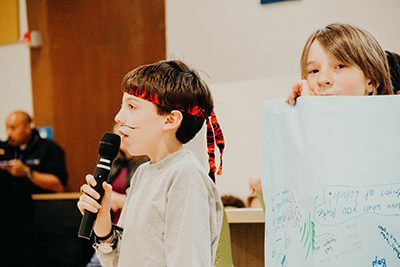 by Dr. Bill Hudson, Head of School
by Dr. Bill Hudson, Head of School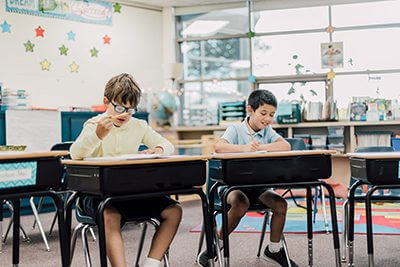 by Jeremy Drucker ’97
by Jeremy Drucker ’97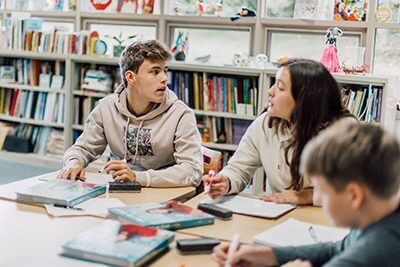 Today’s popular culture is often highly packaged and thoroughly curated. Everything looks good on screen, and the social media tally of likes, loves, and shares literally quantifies a hierarchy of success. But this desire to effortlessly excel at all can quickly backfire, especially for teens—leading to paralyzing anxiety on the path to perfection.
Today’s popular culture is often highly packaged and thoroughly curated. Everything looks good on screen, and the social media tally of likes, loves, and shares literally quantifies a hierarchy of success. But this desire to effortlessly excel at all can quickly backfire, especially for teens—leading to paralyzing anxiety on the path to perfection.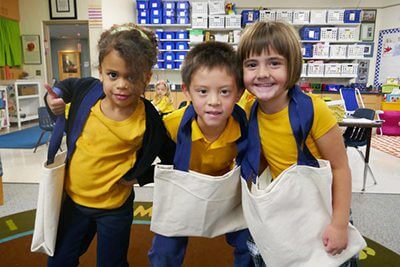 by Dr. Bill Hudson, Head of School
by Dr. Bill Hudson, Head of School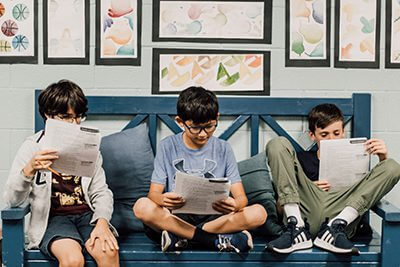 Please join us on the Mounds Park Academy campus for lunch on Thursday, December 12 at 11:30 AM.
Please join us on the Mounds Park Academy campus for lunch on Thursday, December 12 at 11:30 AM. How we work, and learn to work, is changing for real and in real time. The technology, pace, and business models that define our local and national economies are shifting almost by the day, with old structures retiring and new approaches taking center stage. This fundamental change in career paths and professional expectations is shaping how progressive schools view the skills they teach students, and how they create opportunities for students to grow and prepare in and beyond the classroom.
How we work, and learn to work, is changing for real and in real time. The technology, pace, and business models that define our local and national economies are shifting almost by the day, with old structures retiring and new approaches taking center stage. This fundamental change in career paths and professional expectations is shaping how progressive schools view the skills they teach students, and how they create opportunities for students to grow and prepare in and beyond the classroom.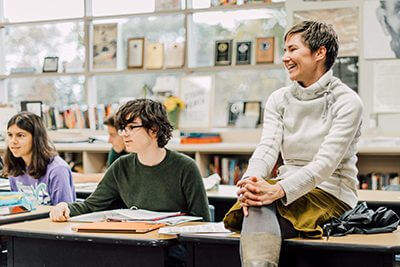 by Dr. Bill Hudson, Head of School
by Dr. Bill Hudson, Head of School Physics 9 represents a change to the science curriculum starting in the 2019-2020 school year at MPA. For the first time, ninth graders are taking physics, and this adjustment to the science sequence at MPA allows for a variety of electives in the twelfth-grade year.
Physics 9 represents a change to the science curriculum starting in the 2019-2020 school year at MPA. For the first time, ninth graders are taking physics, and this adjustment to the science sequence at MPA allows for a variety of electives in the twelfth-grade year. by Neelu Boddipalli, MPA Parent and Trustee
by Neelu Boddipalli, MPA Parent and Trustee